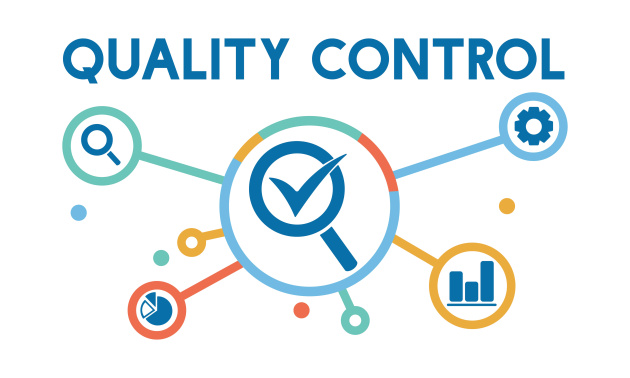Are you spending an excessive amount of resources on incorrect color? Without quality control (QC), your color will fail, no matter how precise your color-measuring equipment is.
A key part of QC is making sure the color you specify is the color you get. By instituting QC procedures, you can ensure proper color communication with clients and vendors, a thorough inspection of raw materials before production begins, and confirmation of the correct coloration prior to shipping.
The Five Components of a Reliable QC Program
1. Spectrophotometer Color Quantification
Due to the subjectivity of human vision, misinterpretations and misunderstandings are common. Minor adjustments, such as making colors slightly brighter, slightly bluer, or slightly darker, require much experimentation. Hours of time can be saved by using a spectrophotometer to measure color instead of judging it visually.
A spectrophotometer is an instrument used to measure and study color by taking light, separating it into tiny bands of color, and then sending the bands back through the instrument’s optics into a receiver for analysis. The spectral reflectance curve generated by a spectrophotometer is sometimes referred to as the “fingerprint” of a color due to its uniqueness. The most precise technique to measure color is by comparing spectral data. It’s recommended that you decide which of the different available spectrophotometers is best for your needs.
2. Determine an Acceptable Color Tolerance
Tolerance refers to the allowable range of variation between the desired (target or standard) color and the actual (or sample) color. Choosing a suitable tolerance is crucial. If your tolerance is too low, you’ll waste a lot of time attempting to achieve an impossible goal. However, if your tolerance is too high, you might approve colors that the client will reject.
The issue of tolerance is a serious one. The most popular color models are L*a*b* and L*C*h°. There are free white papers online that will teach you how to choose the proper model, select the right tolerancing technique, and make your tolerances actionable.
3. Analyze Color using QC Software
You can use tolerances to determine whether a product passed or failed QC. QC software can alert you if the color of your production has started to deviate from the norm, then assist you in figuring out what to do to get it back on track. The QC software can monitor trends and generate historical reports, which is especially useful in a global supply chain, since these provide updates and accountability.
One popular QC solution is known as Color iQC. You enter the desired color, set the tolerance, and monitor the color during manufacturing; the software does the rest.
4. Visually Evaluate Color
The first step of color assessment is a visual comparison between the color you generate and the desired color. This can work for less-demanding color applications, but be aware that it opens the door to mistakes and arguments with clients and vendors. This is due to the fact that many individuals lack the necessary training to visually evaluate color, that varied lighting circumstances can lead to differing judgments, and that people’s perceptions of color vary.
One in every 13 men and one in every 300 women have color blindness. Because of the importance of color vision in QC, every person who makes judgments based on visual evaluations should take and pass the FM 100 Hue Test. Take a look at an online color challenge and see how well you do, then show the challenge to your friends and coworkers to see if they can do as well as you! (This can be entertaining, but it’s not a replacement for the actual FM 100 Hue Test.)
5. Evaluate Color Under Controlled Lighting
A parking lot is not an acceptable location for viewing samples under D65 lighting because the sunlight outside is dynamic. You can only make accurate assessments using North Sky Daylight between 11 a.m. and 2 p.m., when light levels are most in line with standard illumination. But what if it’s a day with clouds? And what do people on the third shift do?
By simulating real-world lighting conditions in a light booth, you can get an accurate idea of how your assembled products will look in the real world. Both the Judge QC and the SpectraLight QC are examples of calibrated light booths, which include light sources that conform to CIE standard illuminant values for use in computing colorimetrics in QC software. Color decisions can be made with confidence when all your measurements match up.
Getting Started
If you (or, even worse, your clients) are rejecting a large number of products despite your best efforts, you likely have something more to learn. Getting educated is essential. Fortunately, a variety of training options exist to help you learn what you need to know about setting up reliable color control, including eLearning, national seminars, and individualized onsite instruction.
While it’s true that the upfront cost of a high-quality program’s tools might seem prohibitive, postponing such an investment could lead to greater expenses down the road. To help you rapidly recoup your initial investment, you should assess your existing color process and solicit suggestions for improving it.

